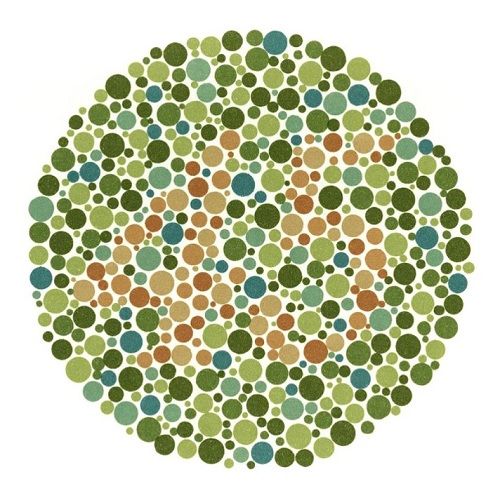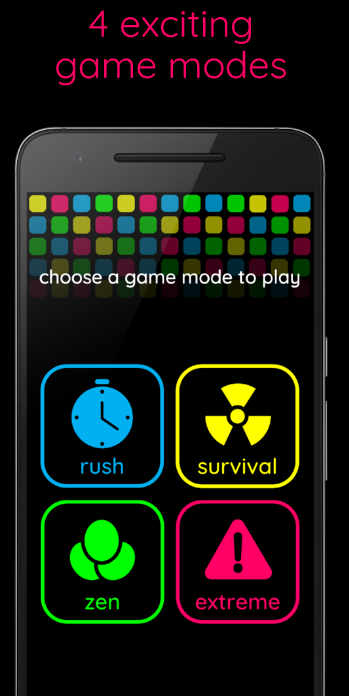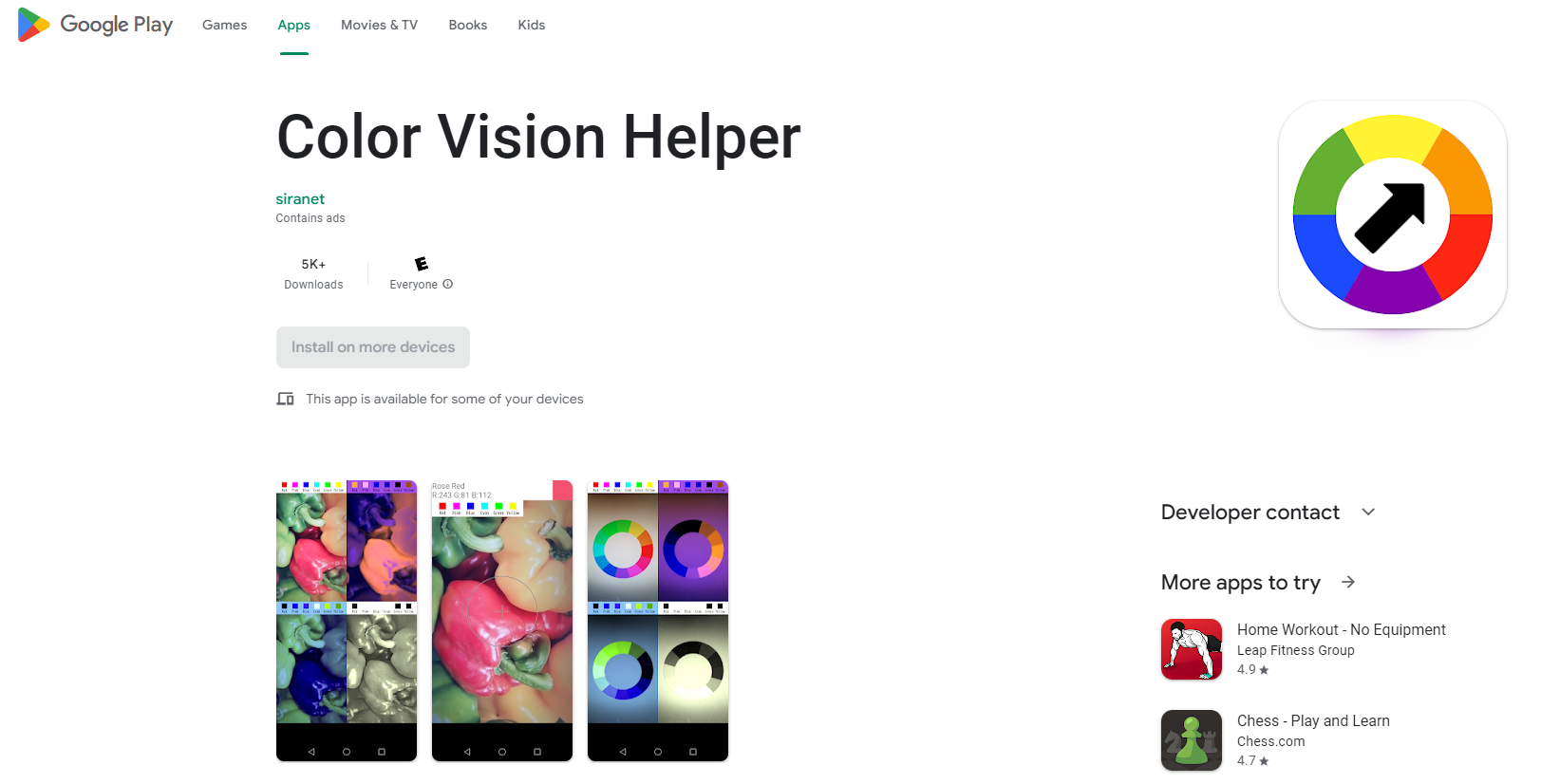A call for color-blindness based games!
8% of men are color-blinded.

Are you color-blinded also?
Tell me, what do you see in the Figure 1? Nothing? Well, welcome onboard! We are flying on the beautiful color-blind plane together.









You all know a friend who struggles with some colors, be it confusing green and red or yellow and red. According to the NIH, about 8% of men and 0.5% of women are color-blinds to some extent [1], [2]. It seems that color-blindness predominantly affects European and Northern European ancestry more than other part of the world [3]. For instance, a recent study in India showed that on only 1.89% of the 3259 students were color-blinded, most of them were boys (1,69 % boy vs. 0.184% girls). Indeed, most of the time, color-blindness is inherited via what we called an X-linked inheritance or for more simplicity (because life is always complex…), “only males are affected” pattern [1], [4], [5].
Let’s talk genetics
It has to do with our chromosomes which are the structures that host our genetic data. Genetically, men have one X chromosome and one Y chromosome (which is shorter than the X chromosome) and women have two X chromosomes. Men therefore transmit either an X or a Y in the spermatozoid whereas women only transmit an X in the oocyte (which can be one of both X). During fertilization when spermatozoid and oocyte reunite, different combinations are thus possible as seen in Figure 2.

A gene is a portion of the chromosome, which can be represented as a little mark as seen in the Figure 2. The white mark represents the healthy gene, whereas the colored mark represents the unhealthy one. The first point we can highlight here is that the father only has one copy of the gene, whereas the mother has two of it. Let’s call the “color gene”, the C-gene. To put simply, in order to have normal color vision, at least one copy of the C-gene should be healthy. As women has two X chromosomes, if one does not work fully, there is still the other C-gene there. For men this is another story: C-gene is not located on the Y chromosome and the one on the X chromosome is unhealthy. At the end of the day, it is the same as having C-gene at all! This is therefore what explains why “only men are affected” in this X-linked inheritance pattern.
What happens to light going through the eye?
The human eye is a tremendously complex organ (Figure 3 [6]).

Light is made of photons. There is a very interesting book called “The Nature of Light, What is a Photon?” which discusses about the concept of light in physics. Short answer: a photon is an elementary wave-particle with no mass, which transports energy. We see things because photons from light source (for instance, the sun) spread photons all around that bounce onto objects and bounce back into our eyes. These photons then go all the way through the eye according the Figure 3: through the cornea, pupil, lens, the central transparent liquid of the eye called aqueous humor, reaching the retina located in the back of our eye. Some specialized cells which react to photons, called photoreceptors, convert the energy from photons into electrical signals, which than travel through the optic nerve all the way through the brain to the occipital lobe at the back of our brain. Within the brain, signals are processed to create the image we experience.
Therefore, blindness can happen if any of these structures are unhealthy, be it the eye, the retina, the optical nerve, the brain and especially the occipital lobe of the brain. This article provides a very clear and simple explanation on how the vision and the eye work [6].
Educational fact
One can be blind, with no damage in the eye at all. Indeed, the brain can be damage through strokes, trauma, infections or tumors. Photons are still converted to electrical signals but these are not processed anymore, thus the patient experience distorted or no image at all.
A little bit of anatomy
Nature is amazing. There are two types of photoreceptors: cones and rods. Let’s have a look, from the bigger picture to the cell itself. Figure 3 shows the eye, and a little schematic of the retina on the right. On that sketch, you can see at the far right, some rods-shaped (dark long structures) and cone-shaped (squid-shaped and colorful structures) photoreceptors. Some very beautiful sketches of the cones and rods are available on the Britannica website about photoreception(Figure 4).


Why rods and cones? Well, this is exactly the title of a scientific article published in 2015 [7]. The central part of the retina is mainly composed of cones, which reacts very fast to light changes but are not very sensitive. On the other hand, the peripheral retina is mainly composed of rods, which are extremely light sensitive (it has been reported they can detect a single photon!) but are slow-reactive to light changes (we cannot track fast movements with rods).
Actually, 95% of photoreceptors are rods. The exact reason of the shape is not well known. However, our ancestors from 500 million of years ago already had rods. The authors concluded that rods were more favorable in an evolutionary point of view because of their high photon sensitivity, considering the eye evolution in the vertebrates. Indeed, first vertebrates lived deep down in oceans where sunlight does not shine… Any source of light was therefore crucial to navigate through darkness.
Electron microscopy of the mouse retina shows a closer look at how it is in real life (Figure 5, [8]).

If we further dissect each cells (and scientists did it for us, so we don’t have to do it), we can individualize rods and cones cells (Figure 6, [9]).

How do we see colors?
Cones are actually the ones which allow us to discriminate colors [4], [9]. That is why in Figure 3 you see rods in only one color, but cones in many different colors. Human discriminate colors upon differential stimulation of three cone types (red, green and blue) according the light wavelength (Figure 7): short wavelength tends to be blue, long wavelength tend to be more red. Ultraviolets have wavelength smaller than blue and infra-red have wavelength larger than red.

Cones are of three categories (or three pigments): short (S), middle (M) and long (L) wavelength-sensitive [4]. S cones are maximally sensitive to light at about 420 nm (blueish); M cones to 530 nm (green) and L cones to 560 nm (yellowish). The blue pigment gene is located on chromosome 7, whereas other pigments are located on X chromosomes, explaining X-linked inheritance we previously discussed. Combinations of various damages in those genes explain the different color-blindness observed in people.
Deuteranomaly and Protanomaly… wait, what?
There are three main type of color-blindness: red/green blindness, blue/yellow blindness and complete color blindness (which is also called monochromacy) [4], [10].
Within the red/green blindness, 4 subtypes have been reported:
· Deuteranomaly. Deutero comes from ancient Greek and means “secondary”. It is the most common type of red/green color blindness and makes green look more red.
· Protanomaly. Prota comes from ancient Greek and means “primary”. It makes red look more green and less bright.
· Deuteranopia and protanopia. There, you cannot tell the difference between red and green at al.
Within the blue/yellow color blindness, 2 subtypes have been reported:
· Tritanomaly. Here, it is difficult to tell the difference between blue/green and yellow/red
· Tritanopia. It is impossible to tell the difference at all, between blue/green, purple/red; yellow/red, yellow/pink at all. These colors are also viewed less bright.
You can test yourself: Ishihara test!
If you have doubts, you can perform the Ishihara test here. Ishihara Shinobu is an ophthalmologist who graduated from Germany. He was not reported to be color-blinded though. His test is now widely used to assess color blindness [11], [12].
Here are my performances at the test on the Figure 8.

Indeed, doing it on a computer screen, on the internet by myself appears to be a bit suspicious. Strictly speaking, people should perform many different tests with professionals. But on this “non-serious” test, I clearly don’t see the numbers on the different figures.
No games on color blindness! Is that normal?
When searching for “color blind video games”, I did not find any games specifically designed around the topic of color blindness, except for one on Android. This game is called “Kuku Kube: color blindness” (Figure 9).



And this is hardly the only game I found on the internet. This is the only one on Android platform which provides a little bit of fun! The other games rely on the same principles but you feel like being in a classroom…
The game mechanics are really simple. You have a grid many squares of the same color. You then have to click on the square that has a slightly different color. For instance, you start with 2x2 grid of blue color, from which one square is slightly lighter. You can end up with a 16x16 grid with orange squares… what a nightmare!
You can choose 4 different game modes: rush, survival, zen and extreme.
· In rush mode, you have a countdown timer and have will have to go as far as you can!
· Survival mode is very interesting. You start with a countdown of 10 seconds. Each time you are correct, it adds 2 seconds. When you are wrong, it removes 3 seconds. Therefore, you have to be accurate and fast!
· Zen mode: no countdown timer. Only “right” answers vs “wrong” answer.
· Extreme mode: you fail, you die!
I screen-recorded my phone while playing it so you have a glimpse of you it is (Figure 10).
Pros: I had fun playing the game! I’ll be honest, I did not feel the same as when I played Nier: Automata of The Witcher 3. But it is definitely a great casual game, with great potential. I think anyone can enjoy this even people without color blindness. I like the simplicity of it, no need for tutorial. You have many different game modes. You also have a scoring system! It pushes you to do better each time! Even if the music is no the best, it suits well to the game, though being a little repetitive.
Cons: The scoring system seems to be local only. You cannot share your scores online with other people such as other games. On Zen mode, I would have loved to listen to another kind of music, a more relaxing one stocking to the “zen” word.
The concept of the game is cool and has a lot of potential. But there is virtually no other games based on the color blindness. Since millions of people are affected by this condition, that could be very interesting to developed such games!
“Life-saving” app for color-blinded people on Android
This morning I wanted to charge my GoPro batteries. The problem is always the same: when are my batteries fully charged? I don’t want to damage the batteries letting them plugged in.
So, I looked for an app (which I knew in my heart that such apps should exist somewhere) on Android. I typed “color blindness helper” on Google store and found “Color Vision Helper” (Figure 11). And that definitely changed my life!

I turned on the app and with my phone camera, targeted the colored area located underneath the battery (Figure 12).




With that app, I can clearly see through my phone when the batteries are still charging (yellow) or fully charged already (green). How fantastic!
I am mainly red/green color blinded, but also a little bit yellow/red/green. My grand brother also is color-blinded, same as me. It is not very heavy because I can still tell the difference if the contrast if high and if I concentrate on the colors. In everyday life, it doesn’t bother me at all. For instance, I can easily assess if the battery of my GoPro are charged by putting them in the camera, turning it on and look at the percentage bar. Or I can more or less assume that by charging during 3h already, it should be OK.
Tell me in the comment section if you are also color-blinded and which one you have!
Cheers!
References
[1] “Color Blindness | National Eye Institute.” https://www.nei.nih.gov/learn-about-eye-health/eye-conditions-and-diseases/color-blindness (accessed Mar. 19, 2023).
[2] “Color vision deficiency: MedlinePlus Genetics.” https://medlineplus.gov/genetics/condition/color-vision-deficiency/#references (accessed Mar. 19, 2023).
[3] B. Wong, “Color blindness,” Nat. Publ. Gr., 2011, doi: 10.1038/nmeth.1618.
[4] M. Fareed, M. A. Anwar, and M. Afzal, “Prevalence and gene frequency of color vision impairments among children of six populations from North Indian region,” Genes Dis., vol. 2, no. 2, p. 211, Jun. 2015, doi: 10.1016/J.GENDIS.2015.02.006.
[5] “X-linked inheritance — Knowledge Hub.” https://www.genomicseducation.hee.nhs.uk/genotes/knowledge-hub/x-linked-recessive-inheritance/ (accessed Mar. 19, 2023).
[6] “Simple Anatomy of the Retina - Webvision - NCBI Bookshelf.” https://www.ncbi.nlm.nih.gov/books/NBK11533/ (accessed Mar. 19, 2023).
[7] T. D. Lamb, “Why rods and cones?,” Eye 2016 302, vol. 30, no. 2, pp. 179–185, Nov. 2015, doi: 10.1038/eye.2015.236.
[8] T. G. Wensel, V. L. Potter, A. Moye, Z. Zhang, and M. A. Robichaux, “Structure and dynamics of photoreceptor sensory cilia,” Pflugers Arch. Eur. J. Physiol., vol. 473, no. 9, pp. 1517–1537, 2021, doi: 10.1007/s00424-021-02564-9.
[9] S. Kawamura and S. Tachibanaki, “Rod and cone photoreceptors: Molecular basis of the difference in their physiology,” Comp. Biochem. Physiol. - A Mol. Integr. Physiol., vol. 150, no. 4, pp. 369–377, 2008, doi: 10.1016/j.cbpa.2008.04.600.
[10] “Types of Color Blindness | National Eye Institute.” https://www.nei.nih.gov/learn-about-eye-health/eye-conditions-and-diseases/color-blindness/types-color-blindness (accessed Mar. 19, 2023).
[11] D. Suparyadi, M. Yusro, and P. Yuliatmojo, “Color Blindness Test By Ishihara Method Based on Microcontroller System,” KnE Soc. Sci., vol. 3, no. 12, p. 462, Mar. 2019, doi: 10.18502/KSS.V3I12.4114.
[12] J. Birch, “Efficiency of the Ishihara test for identifying red-green colour deficiency,” Ophthalmic Physiol. Opt., vol. 17, no. 5, pp. 403–408, Sep. 1997, doi: 10.1016/S0275-5408(97)00022-7.

